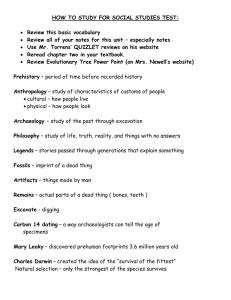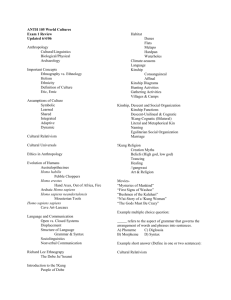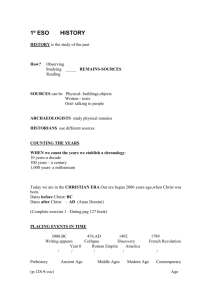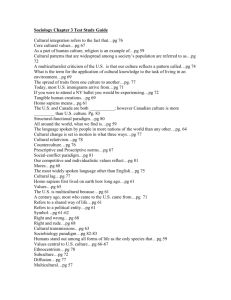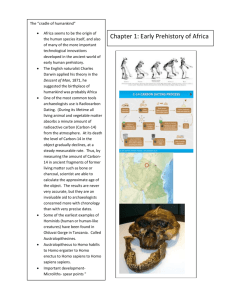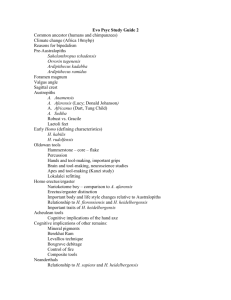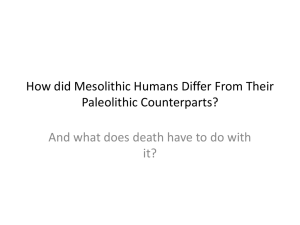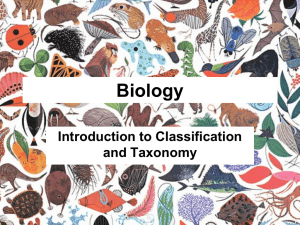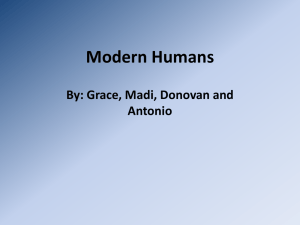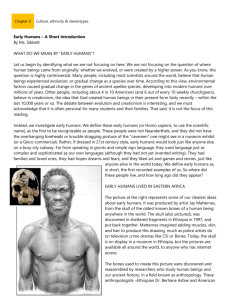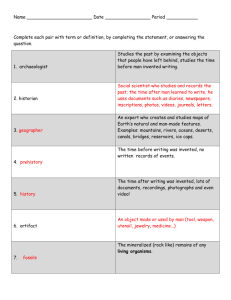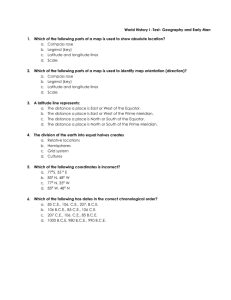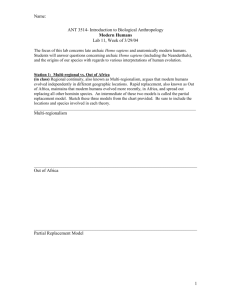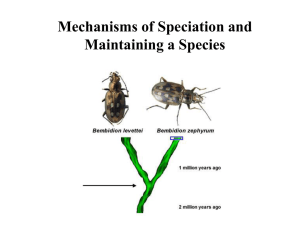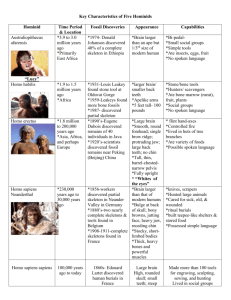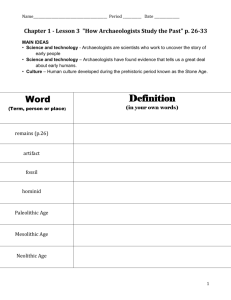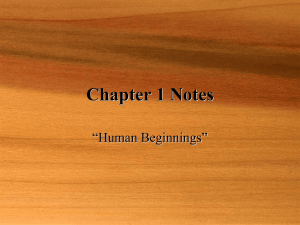Unit 6 Early Humans
advertisement
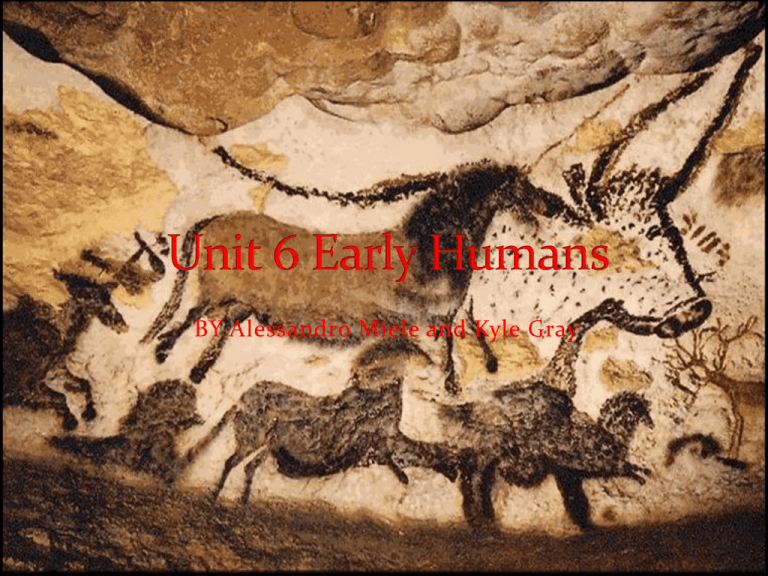
BY Alessandro Miele and Kyle Gray Hominid- Early ancestors of humans that developed in Africa. Hunter and gatherers- Early people that hunted animals and gathered wild plants, seeds, fruits, and nuts to survive. Domestication- The process to changing plants or animals to make them more useful to humans. Megaliths –Huge stones used as monuments. Agriculture- Farming. Land bridge- A strip of land connecting two continents. Australopithecus- Australopithecus an extinct genus of the hominid family found in Africa between about 4 and 1 million years ago. At least seven species of australopithecines are now generally recognized. Their was an Australopithecus named Lucy. (southern ape) Homo Habilis- Appeared in Africa about 2.4 million years ago. Used early stone tools for chopping and scraping. Brain was half the size of modern human brains. (Handy Man) Homo Erectus- Appeared in Africa around 2-1.5 million years ago. Also used more complex tools. Learned to control fire. Migrated out of Africa to Asia and Europe. (Upright man) Homo Sapiens- They appeared in Africa about 200,000 years ago. Migrated around the world. Same species as modern humans; they learned to create fire and learned to use a wide variety of tools. Developed a language. (Wise man) Neanderthal- Found in Neander valley in Germany. Thought to live 100,000-30,000 years ago. Used stone tools and buried their dead. Had some primitive religious beliefs. Were killed off by Homo Sapiens Sapiens. Homo Sapiens Sapiens- Modern Human beings appeared in Africa Between 150,000-200,000 years ago. Began to migrate from Africa 100,000 years ago. Replaced Neanderthals by 30,000 B.C. Paleolithic- It was the old stone age Men hunted and women gathered. Nomadic First tools and weapons Clans 20-30 people They used caves for shelter against the elements. Mesolithic – Middle Stone Age Meso =Middle Domesticated Plants and animals. Neolithic- it is the new stone age. Also known as the agricultural revolution. Neo= new Developed Agriculture and weaving. Forced Migrations Voluntary Migration It is when you have to It is when you have the migrate from a area because of conditions and problems beyond your control. Floods , natural disasters, and war are some examples of forced migrations. Push Factors choice to migrate to another area. More resources, Better Technology, and more freedom are examples of voluntary migration. Pull Factors Tools Axes-stone blade and wooden handle In modern day the axes have Metal blades used for chopping and the grip is still wooden. Hammer- The Hammer had a wooden handle also it has a rock on top of the handle that is used for striking objects. The hammer in modern day still has it’s wooden handle but the head of the hammer is made of metal. The Homo Erectus learned to control and create fire. The Homo Sapiens Sapiens learned to weave there clothes and store food in pottery. ADAPTED First just had stones later created tools and they used what was around them to survive. They hunted animals and gathered food to survive. They also created fire and weaved their clothes. The Homo Sapiens Sapiens made pottery to store their things like food and other belongings. Notes- Interactive notebook Internet sources such as Bing, Google, and Encyclopedia.com Google images https://jeopardylabs.com/play/unit6-early-humans

